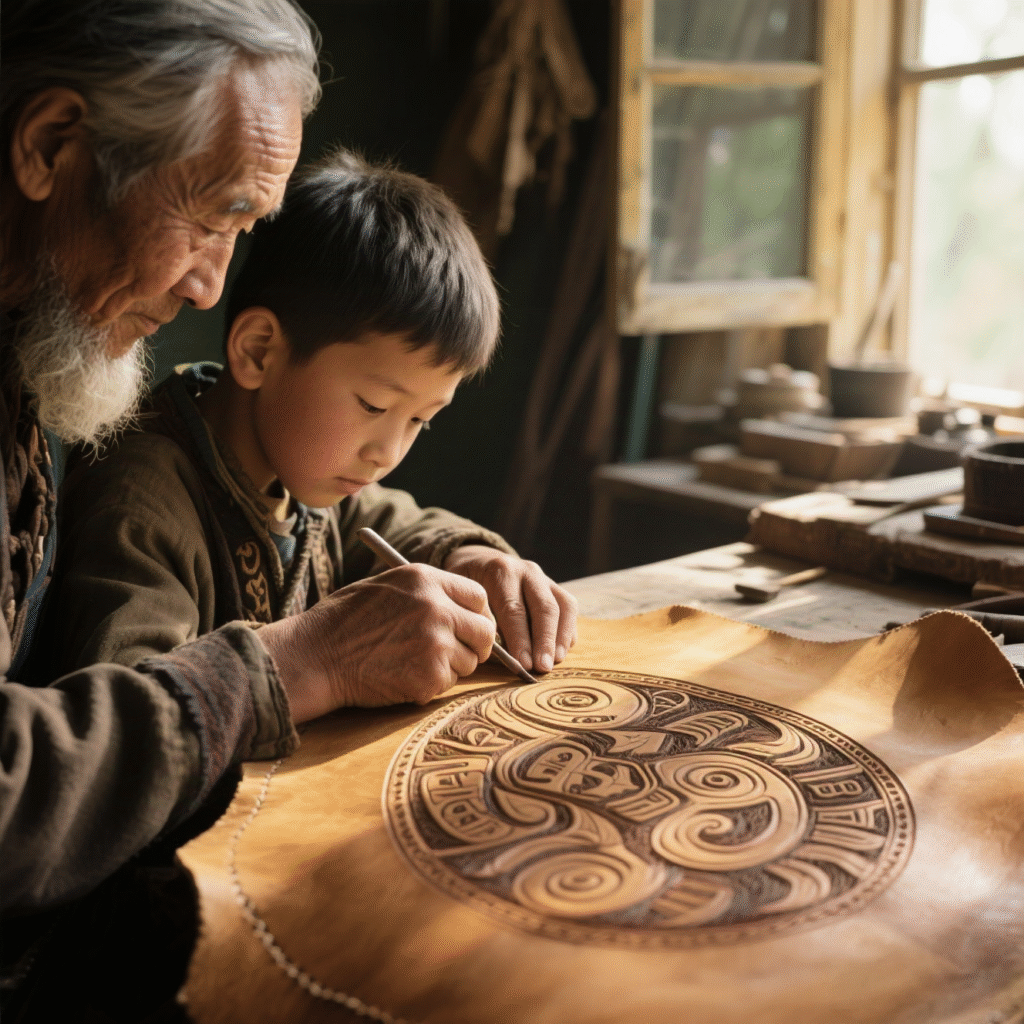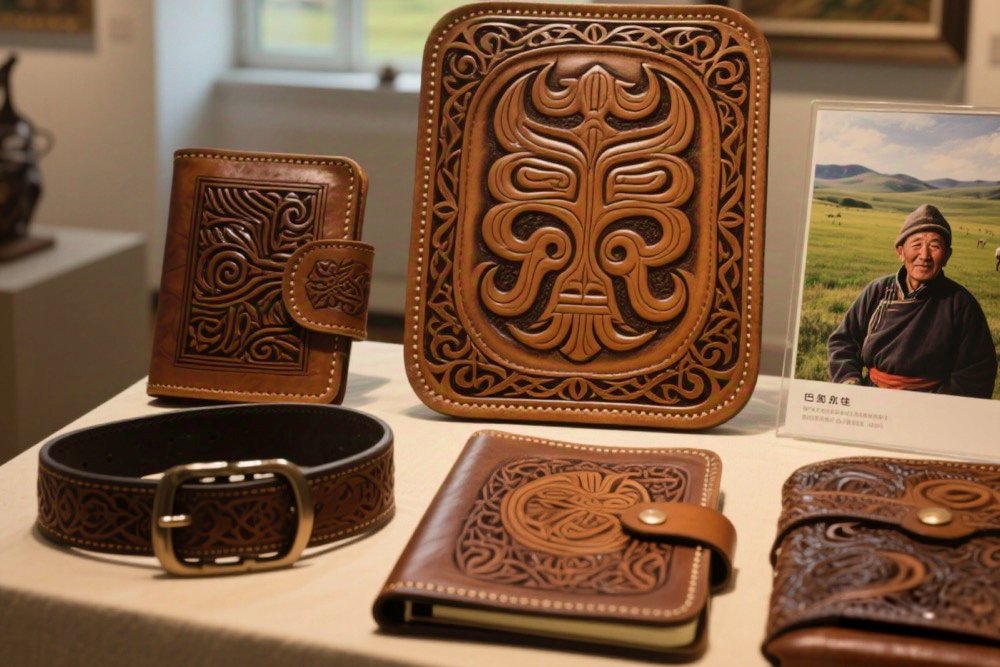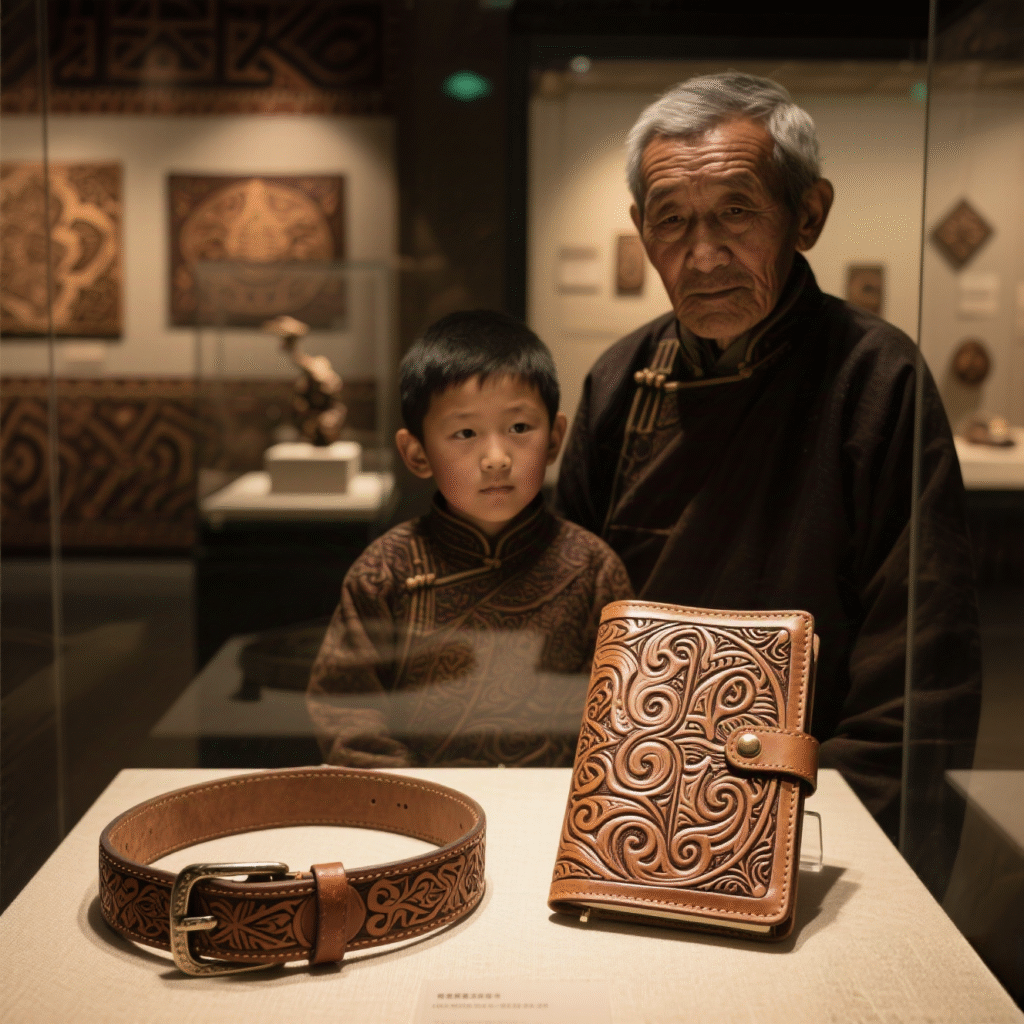Imprints of the Steppe:
Power and Tenderness in Leather Carving Art

Across Inner Mongolia’s vast grasslands, horses gallop freely. The saddle, a herdsman’s closest companion, becomes a symbol of status and honor when adorned with exquisite leather carvings.
Old master Bater, the tribe’s renowned carver, selects thick cowhide. With swivel knives and stamping tools, he patiently pounds, presses, cuts, and sculpts. Eagles in flight, endless scrolls of grass, flowing cloud patterns—all gradually “grow” from the leather under his hands, emerging as reliefs with dramatic depth and tension.
Nomadic Imprints
Leather carving—this art of etching stories onto tough hide—has deep roots among northern China’s nomadic peoples. Steeped in the steppe’s bold spirit, its motifs draw from natural creatures (wolves, deer, eagles), power totems, and auspicious symbols (e.g., fretwork and endless knots, culturally linked to Daoist talismanic script). Beyond saddlery, it decorates flasks, scabbards, and pouches, making it indispensable to nomadic material culture.

Modern leather carving revitalizes tradition

Bater’s grandson merges tribal motifs with contemporary design, creating hand-carved leather belts and genuine leather embossed notebook covers. These pieces preserve leather’s rugged texture and carving’s three-dimensional allure, while meeting modern aesthetic and functional needs.
A fine leather carving—whether hung on a wall or carried close—whispers tales of strength and tenderness, carrying the steppe’s wind and freedom as a unique personalized leather art treasure.